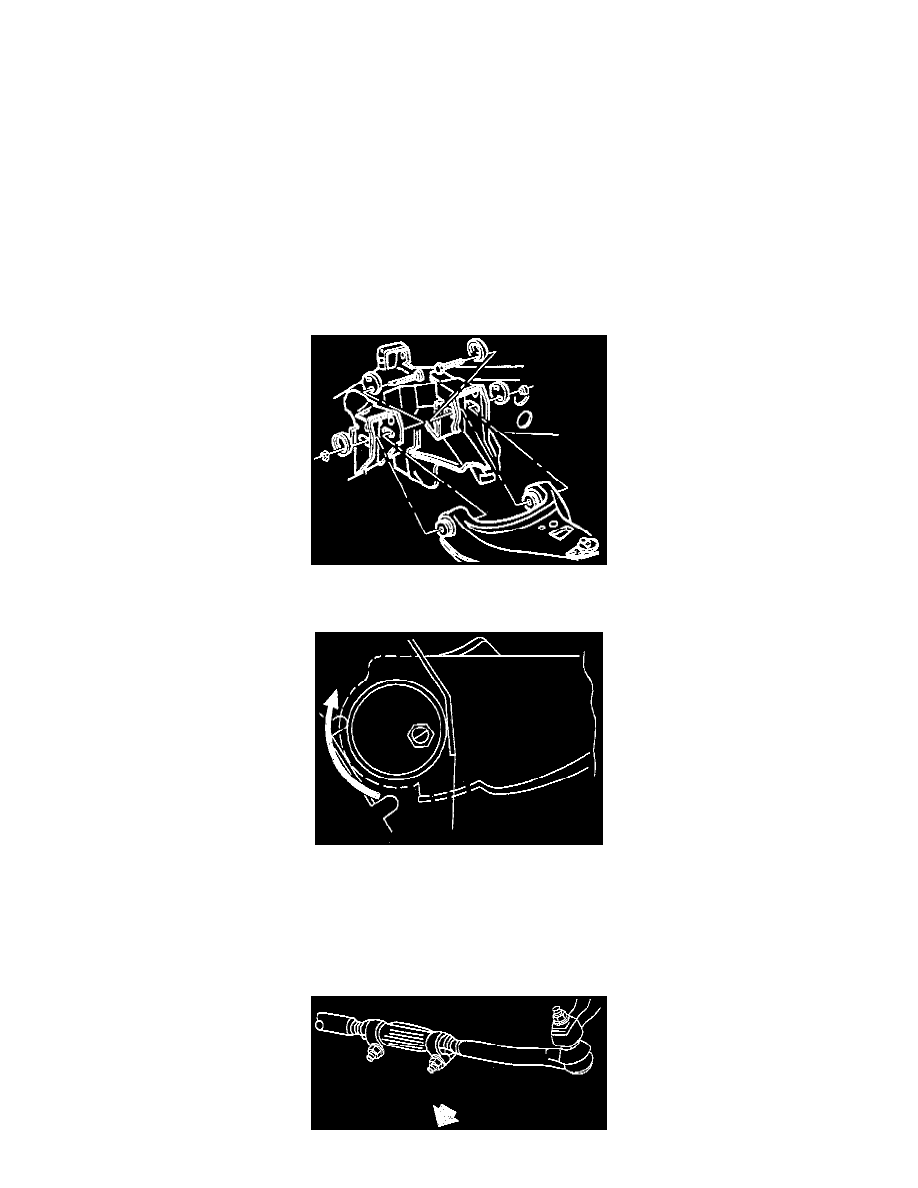Bravada V6-4.3L VIN W (1997)

Alignment: Service and Repair
Front Wheel Alignment
Satisfactory vehicle operation may occur over a wide range of front wheel alignment settings. If the settings vary beyond certain tolerances, adjustments
are advisable. The "Specifications" at the back of this section are a guideline for vehicle diagnosis or for repairs.
Important: Set the front wheel alignment to specifications while the vehicle is in its normally loaded condition. Vehicles which are consistently operated
with heavy loads should have toe-in adjusted with the vehicle under heavy load. This procedure should result in longer tire life.
Measure Front Alignment Angles.
-
Install alignment equipment according to the manufacturer's instructions.
-
Measure alignment angles and record the readings. If adjustments are required, make them in the following order: caster, camber, and toe-In.
Caster and Camber Adjustment
Important: Before adjusting caster and camber angles, the "Z" height setting on all four wheel drive and all wheel drive trucks must be inspected
before setting the alignment to specification. Refer to "Trim Height Specification."
-
Caster and camber adjustments are made by means of cams on the upper control arm frame attaching bolts. To adjust caster-and camber, loosen
the-upper control arm-to-frame attaching nuts. Rotate the cam by rotating the bolt head.
CASTER--To increase positive camber, move the front cam lobe inboard and the rear cam lobe outboard.
CAMBER--To increase positive camber, move both front and rear cam lobes inboard.
-5Torque the nuts after selecting the proper cam position.
Toe-In Adjustment
